Top 10 Superpowered Animals of the Midwest
From polyester bees to wood frogs, Superman has nothing on these extraordinary animals in the Midwest. Meet these 10 superpowered animals and learn why conserving their natural habitats is vital.

Meet the eerie insects, freaky fungi and wicked wildlife that haunt the scariest season in the Midwest.

’Tis the season of heebie-jeebies and creepy crawlies, so we’re dusting off our nature tomes to explore 10 of the most spooky and fascinating species found across the Midwest. From eerie animals to ghostly plants and fungi, these spine-chilling creatures are more than Halloween horror—they're essential players in our regional ecosystems.
That’s why The Nature Conservancy and our partners are working to protect and restore the haunting habitats these species depend on.
Keep reading to discover the top 10 spookiest species in the Midwest—a mix of fearsome flora and fauna that might just give you goosebumps.

Red Eft
Double, double toil and trouble: you won't find this newt’s eye in a cauldron’s bubble.
Red efts, the land-dwelling juvenile form of Eastern newts (Notophthalmus viridescens), secrete a potent toxin through their skin, making them a poor choice for any witch’s brew. Their vivid red-orange coloration is a classic example of aposematism, warning predators that it’s toxic or distasteful.
In this stage of life, red efts can be found scuttling through leaf litter and damp forest floors across the Midwest, from Wisconsin to Ohio. So next time you’re hiking, keep an “eye of the newt” out for this spooky and striking woodland wanderer.
Why They're Important to the Midwest: Red efts keep insects and other invertebrate populations under control in their habitats. They are also key indicators of how healthy a forest and/or wetland is—the presence of red efts means the ecosystem is doing well!

American Toad
Move over, black cats—these warty, toxic garden amphibians are the real backyard witches’ familiars.
Found across the Midwest, American toads (Anaxyrus americanus) wear a permanent judgey face and come cloaked in millennia of spooky folklore. Their European cousins were linked to witchcraft and poison brews. In North America, many Indigenous cultures feature toads in their creation myths and other stories.
Typically nocturnal and solitary, American toads have ghoulishly clever defenses: they inflate themselves to be too big to swallow, secrete a poisonous milky substance from glands behind their eyes and pee on any threat that picks them up.
Touching a toad won't give you warts (myth busted!), but you should always wash your hands after handling a toad. Not counting the toad pee, the toxins on their skin can irritate your eyes and nose. And definitely don't put a toad in your mouth—it'll ruin your day, and probably the toad's, too.
Why They're Important to the Midwest: American toads help keep insect and invertebrate populations in check and they're an important food source for other wildlife. They're also a key indicator of ecosystem health—if toads are present, it's a healthy habitat for other wildlife, too!
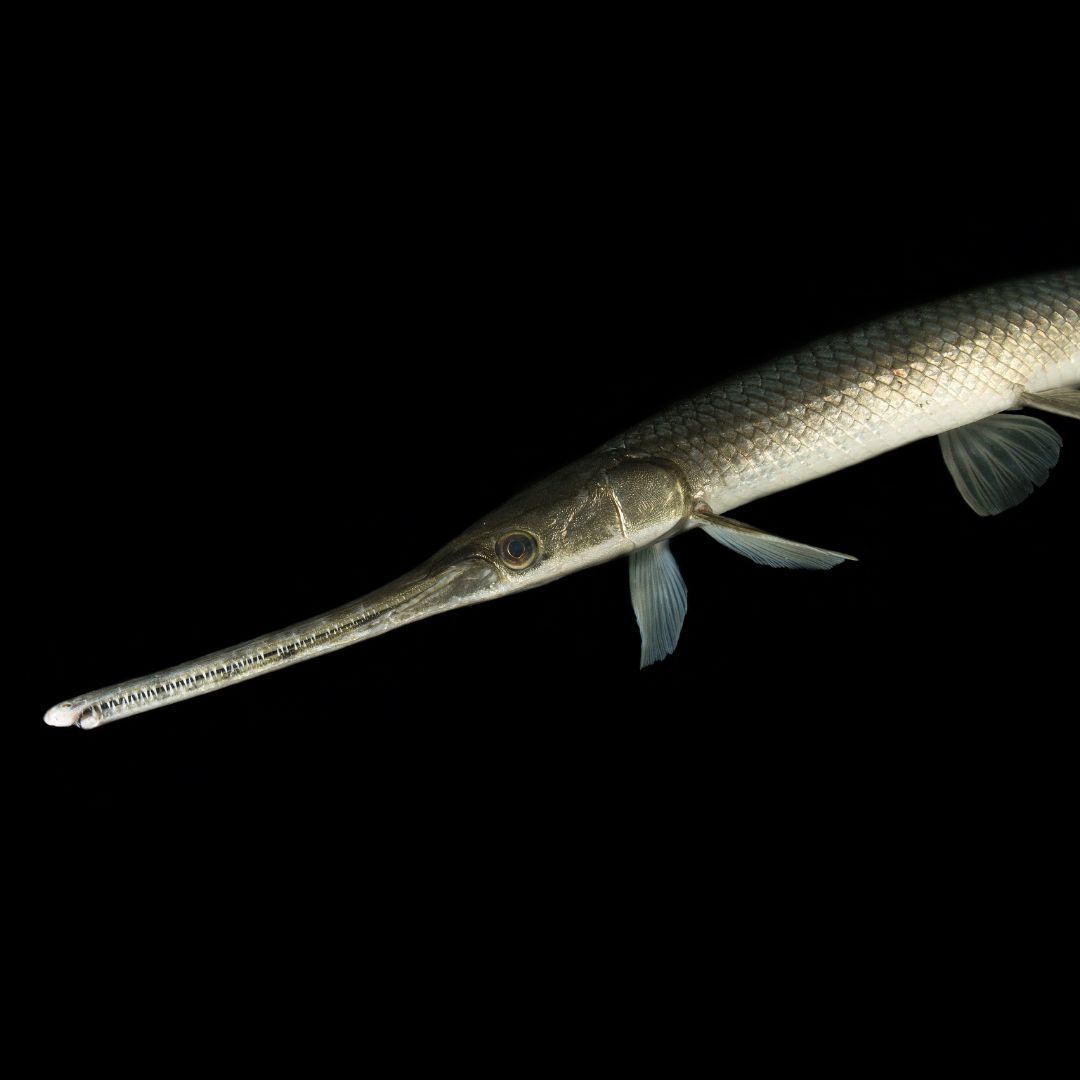
Longnose Gar
Leviathans, scooch over—there's another chilling creature of the deep to watch out for.
The longnose gar (Lepisosteus osseus) is a living fossil, part of an ancient fish family that can breathe both air and water. This adaptation allows it to thrive in low-oxygen environments, making it a stealthy survivor in the murky rivers and lakes of the Midwest.
With a long, narrow snout lined with razor-sharp teeth, the gar is a fearsome predator—crabs, crayfish and smaller fish beware. These armored fish have been around for more than 100 million years, outlasting ice ages, climate shifts and most other species.
Creepy, toothy and tough as nails—this is one fish you don’t want to meet in the shallows.
Why They're Important to the Midwest: As apex predators, they keep the fish populations under control. Longnose gar are also hosts to the larvae of the endangered yellow sandshell mussel.
Don't be ghosted by nature's best stories—sign up for our monthly Nature News.

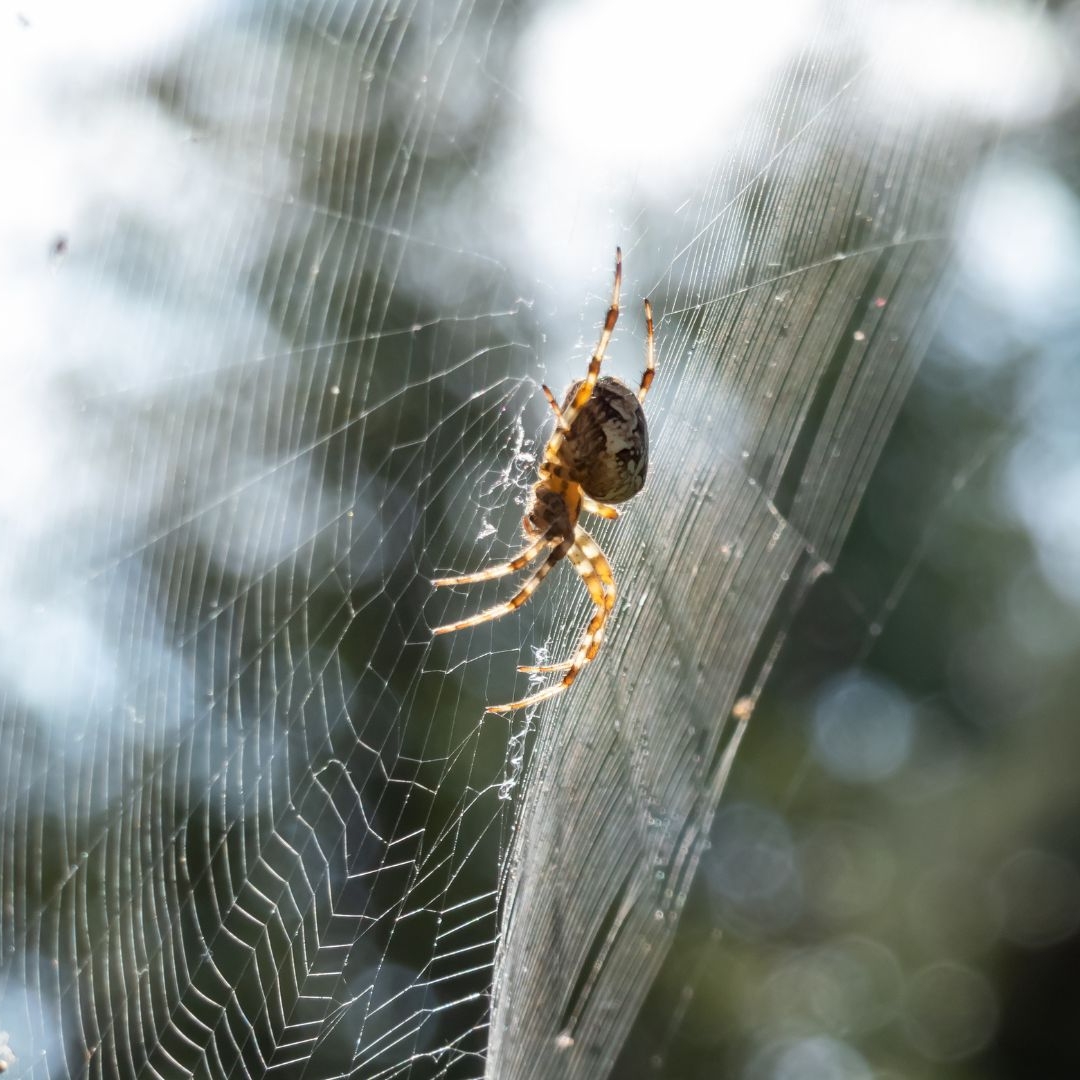
Cross Orbweaver Spider
Big webs, bigger jump scares—these spiders are harmless but more than big enough to make you flinch.
With its large, round abdomen and spooky season timing, the cross orbweaver (Araneus diadematus) looks like it crawled straight out of a Spirit Halloween display. Even its webs look like they were designed for a haunted house—they’re big (up to 2-3 feet in diameter), flat, sticky and spun in the classic spider web spiral.
Native to Europe and introduced to North America more than a century ago, this species now thrives across the Midwest. Their peak activity is in the fall, and you'll likely spot them hanging head-down on their webs, built near porch lights and across trails.
Despite their meaty size, cross orbweavers are harmless to humans. The real fright? Walking face-first into one of their sticky webs (we've all been there), or getting a jump scare as the large spider violently bounces on its web to run you off.
Why They're Important to the Midwest: Cross orbweavers help control insect populations, especially pests such as mosquitoes, flies and moths.
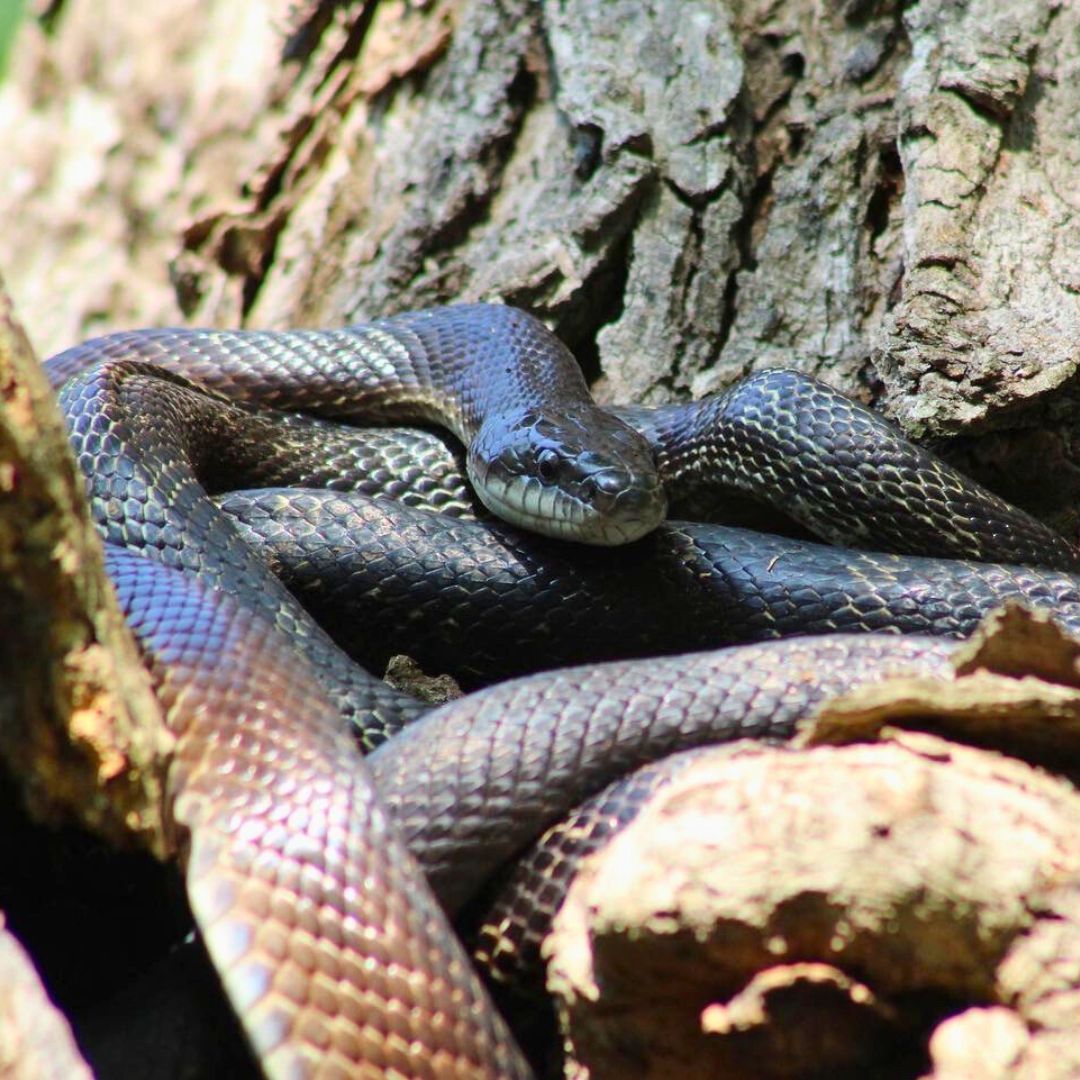
Gray Ratsnake
Six feet of slithering nonvenomous stealth in the Midwest treetops? At least you're not a squirrel.
Growing up to six feet long, gray ratsnakes (Pantherophis spiloides) are one of the largest snakes in the Midwest. But don't let their size scare you—they're nonvenomous constrictors that find humans scary and rodents delectable.
Their spookiness comes from their ability to climb trees, sheds, barns, brick walls—it doesn't matter. If their belly scales can grip it, they're going up. Once in the treetops, gray ratsnakes will slide from tree to tree, hunting prey or seeking a sunny branch for basking.
And let's be real—even though gray ratsnakes are harmless to humans, if you're out hiking, having a six-foot snake suddenly slither in the branches above your head would give even the most enthusiastic nature lover a chill up their spine.
Why They're Important to the Midwest: Gray ratsnakes help to keep rodent populations in check, preventing the diseases they may spread. They’re also a good food source for other wildlife.
Look Up!

Turkey Vulture
Take a seat, Grim Reaper—turkey vultures are the true masters of mortality, detecting death from hundreds of feet in the sky.
Found across the Midwest and known as eaters of the dead, turkey vultures (Cathartes aura) should really be known as smellers of the dead (okay, still creepy), thanks to a rare adaptation among birds—a keen sense of smell.
While soaring through the sky, a turkey vulture uses the oversized, open nostrils on its beak to channel air to its brain, mapping scents across the landscape. Their sense of smell is so sharp that they can detect the gases of corpse decay at just a few parts per trillion. This super-smelling ability also tells them how fresh a meal is—turkey vultures prefer carrion that's less than 24 hours old.
Creepy? To us, sure. But for vultures, it’s a way of life and a comfortable niche to fill.
Why They're Important to the Midwest: Turkey vultures are nature’s cleanup crew, clearing away dead animals before disease can spread. They also lead other scavengers, like black vultures, to carrion.

Turkey vultures lack a syrinx (voice box), making them mostly silent—except for a guttural hiss that is hauntingly hair-raising.
A brief recording of a deep, guttural hiss from a turkey vulture.

Doll's Eyes
Toxic berries that stare back? Hard pass.
Getting double spooky credit for two creepy names, white baneberry, also known as doll's eyes (Actaea pachypoda), is a native Midwest plant that looks like it belongs on a haunted snack tray. Its ghostly white berries, each marked with a black dot, sit atop blood-red stems—eerily resembling a cluster of creepy doll eyes. But these berries are certainly not for noshing—the entire plant is toxic to humans.
A member of the buttercup family, white baneberry is found in forests and thickets, thriving in dappled sunlight. In spring through early summer, the plant blooms with small white flowers. Entering fall, though, white baneberry embodies the spooky spirit, as its flowers transform into berries that look a little too much like disembodied doll's eyes.
Why It's Important to the Midwest: While we can’t munch on a doll's eye, birds and small mammals can snack on them to their hearts’ content. In the spring, its flowers are a vital source of pollen for native bees and other insects. Planting white baneberry in your garden gives you a naturally eerie Halloween decoration and supports Midwest species from bees to birds.
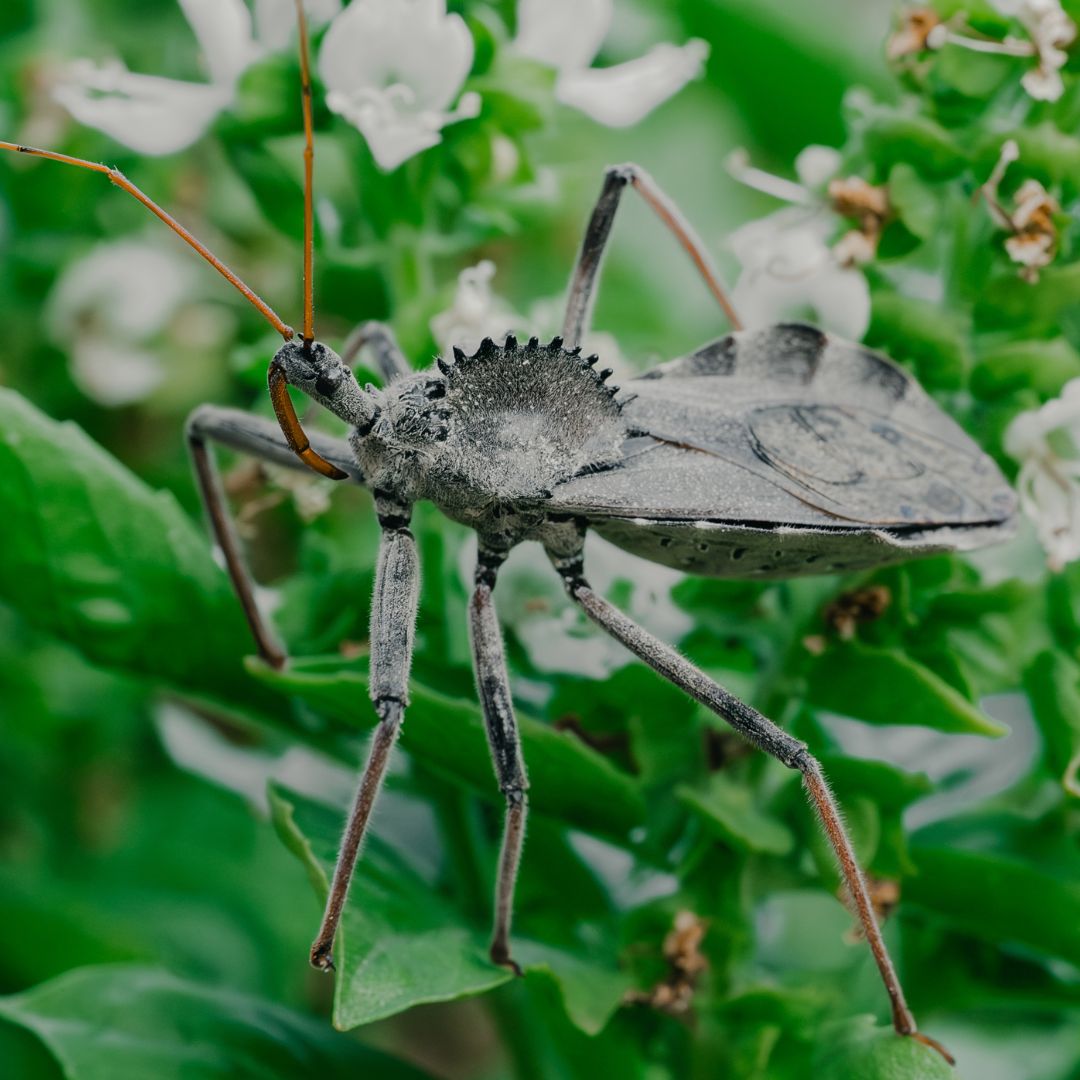
North American Wheel Bug
Horror movie villains pale in comparison to these nightmarish killers haunting the Midwest.
North American wheel bugs (Arilus cristatus) are large, alien-looking assassin bugs found across the Midwest. They’re the only insect in the U.S. with the distinctive cog-like wheel on their back, making them easy to identify if you see one.
For other insects, however, wheel bugs are real-life horror-movie villains. They stalk their prey slowly, lunging suddenly forward to grab the unlucky insect with their strong front legs. Then the wheel bug stabs its victim with its sharp, straw-like mouthpart (aka proboscis), injecting it with a paralyzing toxin and digestive enzymes. While the prey is immobilized, the enzymes liquefy its insides, creating an insect smoothie that the wheel bug slurps back up its proboscis. It's enough to make the most hardened horror fan shudder.
Lucky for us, wheel bugs aren't aggressive toward humans unless they're disturbed. Then, they'll stab the nearest finger with their deadly proboscis—a painful bite that's said to rival a hornet's sting!
Why They’re Important to the Midwest: Wheel bugs are fearsome predators, keeping insect populations down—especially agricultural and garden pests like beetles and caterpillars. They’re also among the few predators that eat invasive brown marmorated stink bugs.

Red Fox
Adorable? Absolutely. But that shrieking, human-like scream? Nightmare fuel.
While red foxes (Vulpes vulpes) may look adorable in the daylight, their nighttime vocalizations are the stuff of nightmares. During cold Midwest winters, they emit blood-curdling, human-like screams to attract mates. National Geographic describes it as “as if Jack the Ripper is roaming the streets,” while Popular Science calls it “a shrill, hoarse scream of anguish... like a human baby undergoing some kind of physical torture.”
So, the next time you’re jolted awake by horrifying screams echoing through your Midwest campground or neighborhood, don’t panic—it’s probably just a red fox trying to flirt.
Why They’re Important to the Midwest: Because they are omnivores, red foxes benefit ecosystems in several ways. They help control rodent and rabbit populations (their favorite prey). They help spread native plants by eating their fruits and dispersing the seeds throughout their home range. Red foxes are also part of nature's clean-up crew, scavenging carrion to help keep the environment clean.
Close your eyes and listen to this.
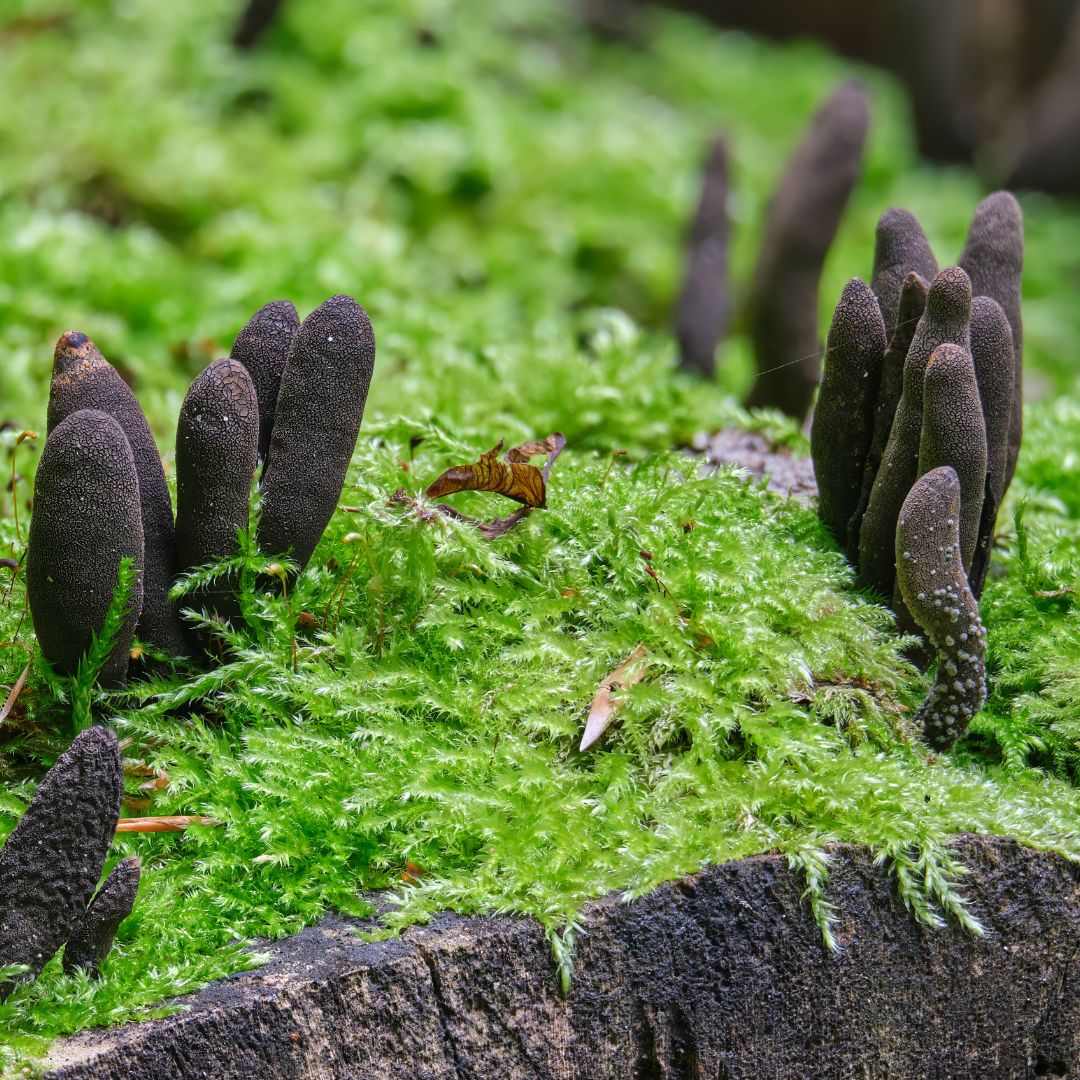
Dead Man's Fingers
Is that a corpse clawing through the forest floor?!
It might just be dead man's fingers (Xylaria polymorpha)—one of the creepiest fungi found in the Midwest and eastern U.S. These black, club-shaped growths eerily resemble decaying fingers clawing their way out of the soil. Found near the bases of dead or dying trees or on decomposing logs and leaf litter, this fungus thrives in shadowy woodland habitats.
Often appearing alone or in small clusters, dead man's fingers add a chilling touch to any fall hike. So, on your next outdoor adventure, keep your eyes peeled and your steps light—this spooky species is a favorite among Halloween nature lovers and curious hikers alike.
Why It's Important to the Midwest: Dead man’s fingers are decomposers, feeding on dead trees and breaking the tough wood down to be reincorporated back into the soil. This not only helps clean the forest but also puts vital nutrients back into the ecosystem for new trees, plants and other organisms to use.